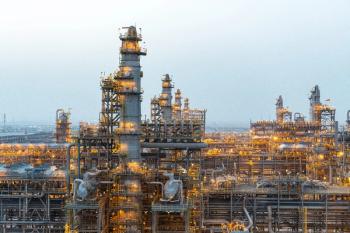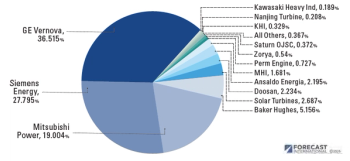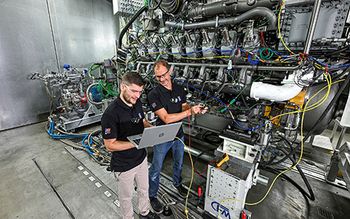
Chevron’s Whale Platform Begins Oil Production in Deepwater Gulf of Mexico
The Whale’s estimated peak production is 100,000 gross boe/d, with up to 15 wells under development and equipped with energy-efficient gas turbines and compression systems.
Chevron Corp.’s Whale semi-submersible platform recently started oil production in the deepwater U.S. Gulf of Mexico, with a projected peak production of 100,000 gross boe/d and up to 15 wells under development. The Whale platform is approximately 200 miles southwest of Houston on Alaminos Canyon Block 773 in more than 8,600 feet of water. It’s also located approximately 10 miles from the Shell-operated Perdido spar platform, in which Chevron owns 37.5% interest.
The Whale contains gas turbines and compression systems equipped with energy-efficient technology and utilizes a simplified design that may deliver lower emissions, lower costs, and higher returns for Chevron. Chevron U.S.A. owns 40% working interest in Whale, with Shell Offshore owning 60% interest as operator.
“Production from Whale brings Chevron another step closer to reaching 300,000 net barrels of oil equivalent per day in the U.S. Gulf of Mexico by 2026,” said Bruce Niemeyer, President, Chevron Americas Exploration & Production. “As a leaseholder in the Gulf, where we produce some of the lowest carbon intensity oil and natural gas in the world, Chevron is positioned to continue growing affordable, reliable production in the United States while delivering higher returns and cash flow.”
This oil production startup is Chevron’s latest, following first production from its high-pressure Anchor project in 2024. The company also commenced water injection operations at two projects to boost production at the Jack/St. Malo and Tahiti facilities.
More Chevron News
In October 2024, Chevron Canada, an indirect subsidiary of Chevron, and a related entity signed a definitive agreement to sell their 20% non-operated interest in the
The AOSP contains oil sands ore: a naturally occurring mixture containing sand, water, clay, and bitumen, which is a viscous form of crude oil. At the Albian Sands mining and extraction operations, oil sands ore is surface-mined from two locations—the Muskeg River and Jackpine mines. Bitumen is separated from the ore and mixed with diluent, allowing the viscous crude oil to be transported via pipeline to the Scotford Upgrader near Edmonton, Alberta.
And in September,
Wärtsilä’s 50DF to SG conversion project will modify the in-service engines to use spark ignition versus diesel pilot fuel for combustion. SG operation enables an optimized combustion process, mitigating methane slip and improving overall efficiency. The first two vessel orders were booked by Wärtsilä in Q3 2024.
Newsletter
Power your knowledge with the latest in turbine technology, engineering advances, and energy solutions—subscribe to Turbomachinery International today.





